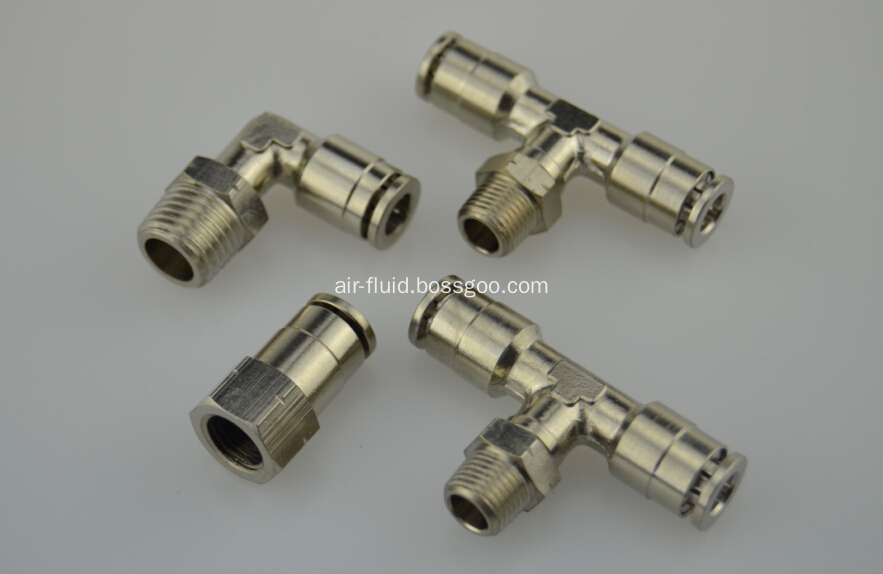In the beginning of 2015, Cixi Air-Fluid Brass Nickel-Plated Push to Connect Fittings passed 90,000 impulse test @ 500 bar working pressure in U.S.A Customers' Labotory.
Cixi Air-Fluid Brass Nickel-Plated Push To Connect Fittings passed the Quality tested by "National Quality Supervision and Inspection Center of Pneumatic Products" .
All the Cixi Air-Fluid NPT Tapered Threads with a groove on Hexagon body to easily distinguish it from the BSPT Tapered Threads Fittings.
The Cixi Air-Fluid fittings' come into configurations as below:
a.Brass Straight MNPT Male Push to Connect Fittings
NPT Thread Brass P.T.C Fittings NPT Thread Brass P.T.C Fittings, PTC Air Fittings, NPT Brass Fittings, NPT Thread Fittings Ningbo Air-Fluid Pneumatic Components Co., Ltd , http://www.air-fittings.com
It is understood that as early as July 1, 2002, asbestos was widely used in the construction of ships, but as asbestos may cause harm to the human body and the environment, IMO has been continuously increasing restrictions on the use of asbestos. The 2000 amendment to the International Convention for the Safety of Life at Sea (SOLAS) adopted by IMO requires that, starting from July 1, 2002, watertight joints and linings used under the specified high temperature/high pressure environment, specific blades, and high temperature New equipment, new installations and new materials containing asbestos materials are not allowed to be used for ships other than insulation. The International Convention for the Safe and Environmental Shipbreaking, adopted in May 2009, and the MSC passed in June of the same year. Resolution 282(86) clearly requires that all ships should be prohibited from newly installed materials containing asbestos.
However, asbestos banned regulations have not been effectively implemented in shipbuilding companies, and the status of ships asbestos banned is not optimistic. At present, there are more than 3500 kinds of known asbestos-containing materials, many of which are widely used on ships. They are widely found in cabs, living areas, storage rooms, kitchens, engine rooms, various types of mechanical equipment, high-temperature and high-pressure piping, and these asbestos The material can detect the asbestos content contained in it by professional testing equipment. According to a report from the Dutch Maritime Authority, since July 2010, a boarding survey of more than 300 arriving vessels found that asbestos materials exist on 95% of ships, many of which were constructed and held after July 1, 2002. Asbestos-free material declaration for ships.
In view of the fact that the current use of asbestos in the ship is still serious and the implementation of banned measures is ineffective, the Netherlands submitted a proposal to the 88th MSC Committee of the IMO and drafted the first draft of the MSC Circular, requiring the maritime authorities, accreditation organizations, shipbuilding companies and all parties concerned to pay more attention to it. The asbestos problem emphasizes the importance of intensified training and its inspection practices for inspectors, prohibits the use of asbestos materials on board ships in the future, and proposes that the competent authority must take necessary measures when discovering ships that violate SOLAS regulations. China Classification Society stated that the possibility of the passage of the MSC circular will be extremely high. By then, asbestos will become one of the key contents of the supervision and inspection of port states in various countries, especially in Europe and the United States. Therefore, relevant government departments, ship enterprises, and ship supporting enterprises in China must attach importance to regulations concerning the prohibition of asbestos in ships so as to avoid negative impact on the shipbuilding industry in China after the new regulations take effect.
China Classification Society says that asbestos is broadly divided into 6 categories: chrysotile, crocidolite, amosite (amphibole), amphibole asbestos, tremolite asbestos, and asbestos asbestos. In general, these six kinds of asbestos can be quickly detected by polarized light microscopy, electron microscopy or x-ray diffractometry. Once asbestos is found in new materials, such as gaskets, it will not only take a long time to replace, but will also have a high replacement cost – about 10% of the cost of shipbuilding. Therefore, shipbuilding companies should not be regarded as lucky. As the main body responsible for issuing asbestos-free statements, they should actively take measures to strictly control the supply and outsourcing channels of all shipbuilding materials and ancillary products. Lead to economic losses and legal risks.
b.Brass Straight Female NPT Push to Connect Fittings
c.90 Degree Elbow Brass Push to Connect Air Hose Fittings
d.Nickel-Plated Brass Branch Tee Push to Connect Fittings
e.Nickel-Plated Brass Run Tee Push to Connect Fittings
f.Brass N.P Bulkhead Female NPT Thread Fittings

Ship Banned Asbestos Countdown
The MSC passed by the International Maritime Organization (IMO). Resolution 282 (86) further revised the use of asbestos on board and required all ships to prohibit the installation of new materials containing asbestos as of January 1, 2011. China Classification Society reminds ship companies that the international convention on the prohibition of asbestos on board is coming into force. European and American countries attach great importance to the prohibition of asbestos and will most likely use it as one of the key contents of the next port state supervision and inspection. China is a major shipbuilding country and repairs. A big ship country should pay special attention to it.